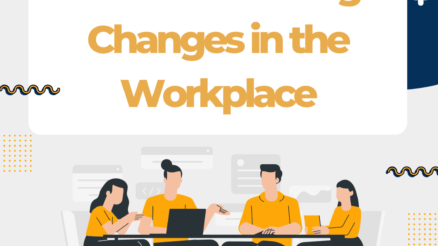Today more people are working in their old age.
According to the U.S. Bureau of Labor Statistics, 32% of people ages 65 to 69 and 19% of people ages 70 to 74 were employed in 2017.
But have you ever noticed that how old employees are treated in their organizations? Are they discriminated against because of their age or given equal and fair opportunities?
Ageism is all about such behaviors.
In this blog post, we’ll explore what ageism is at workplace, how it affects workers, and what you can do to combat it. We’ll also discuss some advantages and disadvantages of ageism at workplace.
What is ageism at workplace?
According to WHO, ageism refers to the stereotypes (how we think), prejudice (how we feel) and discrimination (how we act) towards others or oneself based on age.
Ageism at workplace is discrimination that occurs when people are treated unfairly because of their age. It can happen to anyone, regardless of their age, race, gender, or any other characteristic. Ageism can take many forms, from subtle comments or jokes to more overt forms of discrimination, like not hiring someone because they’re “too old.”
Ageism is a real thing in the workplace, and it can be tough to overcome. Age discrimination or ageism can have a variety of negative impacts on an organization, it can limit or missed out the talented candidates and experienced employees. In other words, ageism damages diversity of workplace.
Advantages of ageism at Workplace
There are some benefits of ageism in the workplace. Some advantages of ageism in the workplace are:
Maturity
Age brings a certain level of maturity to the workplace. This can be beneficial, as it can help to create a calmer and more level-headed environment.
Older employees exhibit better emotional intelligence as compared to younger coworkers. They have been to different situations during their career which makes them more mature and mentally stable.
Wisdom
Wisdom comes with age. This is a valuable asset which older employees have in the workplace.
Due to their life long experiences, they have a better understanding of the business world and how it works. They can offer valuable insights and advice to younger workers.
Experience
Ageism can also lead to a more experienced workforce. This can be beneficial, as older workers may have a better understanding of the industry and the company. It can help to identify the most experienced and knowledgeable employees.
Diversity
Ageism can create a more diverse workforce. This can be beneficial, as it can bring a variety of perspectives and ideas to the table.
Diversity leads to innovation and finding creative solutions to problems and challenges faced by organizations.
Reduce turnover rates
Employees stay for long time at any organization where they’re confident about their job and they’re not discriminated because of their age.
This will reduce the turnover rate in an organization.
Good reputation of organization
Organizations enjoy good reputation when their workplace are free of any discrimination towards employees regardless of their age.
This creates a positive environment which brings not only good name to organizations but also attract talented professionals to join that workplace.
Disadvantages of ageism at Workplace
There are some disadvantages of ageism in workplace. These disadvantages can include:
Loss of Experience
Older employees have valuable experience of their industry. If there is unchecked ageism at workplace and organizations discriminates against age, then older employees become less satisfied with job and they start quitting.
As a result, organization is quite likely to lose that valuable experience which older employees have earned in their lives.
Feelings of isolation or loneliness
Generation gap usually brings communication problem between younger and older employees. This results into isolation of older employees in the workplace.
For example, a younger employee talks about new technology or social media whereas an older employee is not a tech savvy and has little interest in these things. This creates communication problem and older employees tend to feel isolated and alone.
Decrease in productivity levels
When ageism goes unchecked and unaddressed, it creates negative work environment. This toxicity brings down productivity of older employees because they are not satisfied and they are not happy with behaviour and attitude of their coworkers.
These behaviours affect their ability to focus on their jobs and their energy is consumed by this negativity. Consequently, they become less productive with their work.
How to prevent ageism in the Workplace
Ageism is unfortunately a hard reality of modern-day work culture. It’s responsibility of everyone and especially leadership to make their workplace more inclusive rather than exclusive.
The first and foremost is to accept this reality and acknowledge that ageism exists in workplace. The next step is to formulate strategy or policy to prevent it because the inclusive and diverse workplace offers more as compared to exclusive workplace where ageism exists unchecked.
Here are some ways which helps you to make your workplace free of ageism:
1. Educate about ageism
All new recruiters should be first educated that what ageism is and what are its forms, what attitude or behaviour refers to ageism. This training should be focused on replacing those behaviors with positive ones to ensure diversity and inclusive workplace.
HR teams should work hard to identify what are barriers to discard discriminatory behaviors against older employees and then they can design courses which aim at dispelling negative myths and stereotypes against older employees.
2. Retention of Old Employees
There are many advantages to having an age-diverse workforce. By promoting an age-diverse workforce, you can help to create a more positive work environment, attract new employees, and increase productivity levels.
Additionally, by encouraging employees to stay with the company for longer, you can help to create a more stable workforce and reduce turnover rates.
3. Revisit organizational policies
It is important to ensure that all organizational policies are in sync with policy of age-diverse workforce. All organizational policies need to reviewed with this perspective that older employees are treated fairly and equally.
The adverse effects of ageism can be prevented by implementing policies and practices that are fair to all employees. This can help to create a more positive work environment and reduce the risk of age discrimination.
4. Showcase a diverse Workforce
Organizations must be careful while undertaking employees’ branding. Ageism can be prevented by showcasing age-diverse workforce.
Content for employee branding includes videos, testimonials, social media posts etc. Any content which is developed for showcasing diverse workforce must include employees of all ages. This is a great way to showcase how inclusive workplace is and what kind of experience that workplace have.
5. Intergenerational contact
Organizations should provide with more opportunities to every employee to work together regardless of their age. More intergenerational contact the better understanding they have about each other. This will help them to break their stereotypes about age and they learn what are benefits of experienced employees.
It leads to build more collaborative and inclusive workplace which have their own advantages from productivity to creativity.
6. Take out negative words
Organizations should take stock of every word which are discriminatory against old workforce. Whether these words are used in official documents, hiring advertisement or these are appeared in day-to-day workplace communication.
For example, the words like “fresh, young, and energetic” should be avoided in advertisement and job description. It’s always good to use words which identify and explain role of job not the characteristic of workers.
Similarly, there are ageist jokes and comments which are spoken in informal or formal setting. These need to be taken care of and strongly discouraged so that ageism is prevented from workplace.
Conclusion
Ageism is pervasive in society at large and also in every workplace. But it has many adverse consequences for productivity organization. It’s important for all employees both young and old to understand what their behavior qualifies as discrimination against age. It’s equally important to take steps to prevent ageism by giving knowledge on this behaviour, improving intergenerational contacts and improving policies and workplace culture.



